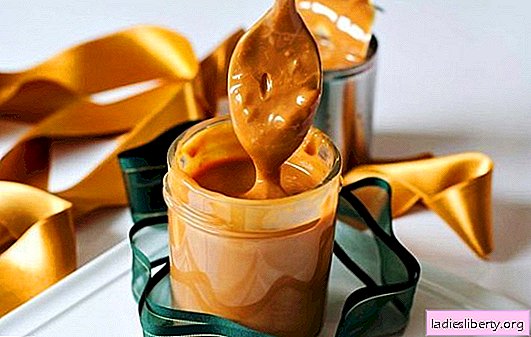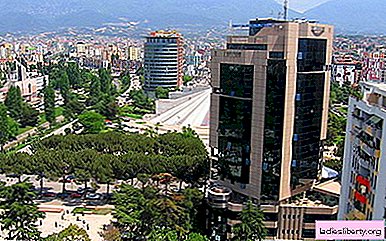
Raspberries and blackberries are sisters.
They are very similar in many ways. The rules for planting and care, reproduction and pruning are almost the same for these crops.
The underground part of both plants is perennial; the aboveground part lives for two years, and then dies.
Therefore, both one and the other for the winter are removed by deflated whips.
The fruits of these crops are “single field berries”. There is something in common in the structure of leaves and bushes. These two cultures interbreed.
In agricultural technology, you can find similar features. But in terms of yield and labor intensity, the difference between black and red berries is huge.
Blackberry

Raspberries are moody. She is overcome by pests and diseases. Overgrowth brings a lot of trouble. With a blackberry, everything is much simpler: it is unpretentious, easy to care for, and much more viable than raspberries.
Blackberry planting and care
The blackberry is drought-resistant and sun-loving. Its roots lie at a depth of one and a half meters, that is, deeper than raspberries. But you still need to water it, especially at the time of ripening berries. Watering is carried out once a week, 20-30 liters under a bush.
Blackberries are more thermophilic than raspberries, so in central Russia they need shelter.
Blackberry planting and after planting care
Planting blackberries with subsequent post-planting care is carried out in spring and autumn. Non-winter-hardy varieties are determined in a permanent place only in the spring. Planting a more winter-hardy blackberry is carried out in autumn, covering with humus or peat, pouring a layer of mulch up to twenty centimeters.
Blackberry before shelter

The dimensions of the pit for planting a blackberry 40 x 40 x 50 cm. It is placed in it:
• ½ bucket of compost or humus
• Superphosphate 40 g;
• Ash -40 g.
• When a blackberry is planted in an acidic soil, approximately one hundred grams of lime is added.
Cumanica (bush erect blackberry) is placed in a row after one meter, leaving row spacing of about two meters.
Blackberries with long flexible branches are called mildew. It is planted after two to three meters with an aisle of a width of two to two and a half meters.
After planting, the blackberries are watered, spending a bucket of water on the bush, and mulched.
Blackberry Care
Top dressing
On a separate bush per year you need:
• Humus - up to 7 kg;
• 60 g of ammonium nitrate in the spring;
• 100 g of 100 grams of superphosphate and 30 grams of potassium sulfate in the fall.
Experts recommend watering blackberries with mullein or chicken droppings - at a dilution of 1: 4-6 and 1: 10-12 to water.
Watering
The plant gratefully responds to regular watering. The best option is drip irrigation. The blackberry experiences the greatest “thirst” during the ripening of berries. Watering is mandatory during the growth of shoots and ovaries. Without water, the berries become smaller and dry. In the fall, winter recharge watering is carried out.
BlackBerry shaping and trimming
The blackberry bush is very powerful and takes 3.5-4.5 meters. To facilitate the care of blackberry plants and the collection of berries, a trellis or other support is needed. Shpaleru put on the second year. Between the supports, a wire is pulled in three rows, to which blackberry whips are subsequently attached.
Blackberries, like raspberries, have a two-year development cycle. In the first year she only grows and lays kidneys. Begins to bear fruit in the second year. Having given the crop, the shoots die off.
The formation of Cumanica (erect blackberry) and mildew (with long lashes) is different.
Blackberry-Crop Cutting
In Cumanica, branches are shortened in the spring to 1.6-1.8 m., Frozen tops are removed.
In late spring - early summer, young growing shoots normalize. On one bush they leave from six to eight.
An important point in the formation of bushes - nipping or tweezing the tops of the shoots. This procedure causes branching of the shoots. After it, the lateral buds wake up, increasing the area of fruiting.
Overgrown lateral branches are cut to 40-50 cm.
Blackberry-Cowberry Pruning
There is no problem with the formation of the bush - usually in the bush there are 2-3 powerful fruit-bearing shoots up to 4 meters or more in length, which, like grapes, are tied to the trellis. Despite the power of the shoots, working with them is easy and pleasant. They are quite flexible and do not prick. Now there are many varieties without thorns.
Trellis is obligatory for them. To facilitate care, shoots of different ages are "bred" on the trellis in different directions.
After wintering, the lashes that will yield this year are fastened in one direction with trellis. They can simply be "wound" onto the wire. Newly growing shoots are sent in the opposite direction.
Winding shoots on a trellis

After harvesting, the old side of the bush is cut out. The shoots of the future crop are removed to the ground, covered for the winter and sprinkled with snow.
Blackberry pruning after harvest - This is the removal of prolific scourges. They are cut down or cut out at the very base, trying not to leave stumps.
Mandatory is also the normalization of ovaries. The first berries that begin to ripen on the apical inflorescence must be picked. Then the blackberry ripens well and together and it can be removed for several fees.
It is very convenient to grow blackberries in automobile tires, and if necessary, the plant can easily be watered and fed, and the tire itself serves as a support for berry bunches.
The newly formed blackberry shoots puff in all directions. They are very fragile and break easily. They must be regularly tied to the trellis, pulled to the wire, forming a bush in advance, giving the desired direction. By September, the shoots are ripening, becoming more flexible and comfortable to work with.
Blackberry breeding
Varieties of blackberry culture differ in appearance and methods of reproduction. It is bred by root offspring, rooting of cuttings and division of the bush.
Breeding Blackberry-Cumanica
Cumanica outwardly looks like raspberries and also forms a root shoot, with the help of which it multiplies.
The advantage of blackberry-mildew is that it almost does not give root shoots. And it reproduces differently. Mildews are bred by rooting of the tops of the shoots.
An intermediate variety - semi-dividing, propagates in both ways.
Propagation of blackberry-mildew
A very simple procedure. It is very convenient to root the apical buds of its creeping shoots. Near the uterine plant, half a spade of a shovel must be dug a hole, the top of a young shoot bent into it, covered with earth and compacted. As soon as the height of the rooted shoot reaches 25 cm, the young plant can be separated from the mother bush and transplanted to the right place.
Propagation of individual varieties of blackberries by cuttings is possible. For example, Thornfrey, in addition to rooting the tops of shoots, can be bred this way.
Blackberry from cuttings

With good care after planting, the blackberry bears fruit annually and abundantly. Harvesting is a pleasure. The berries are black with a purple hue, large (up to 6 grams or more), the brush ripens gradually, ripe berries appear in about a day or two, giving the gardener a respite. Moreover, the more regular the collection, the larger the following berries. The advantage of blackberries is that it ripens after other berries (strawberries, currants, gooseberries and raspberries), allowing you to disperse the time spent on labor for collecting and processing berries.
Blackberry is not only healthy, but also healing, in many ways surpassing even raspberries. They are used as a cold, diaphoretic, restorative and sedative. Interestingly, overripe berries have a laxative, and unripe berries have a fixing property. And yet the blackberry is not a medicine, but a delicacy, a delicacy. From its berries you can make jam and compote, grind them with sugar. They make wonderful wine.











